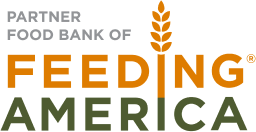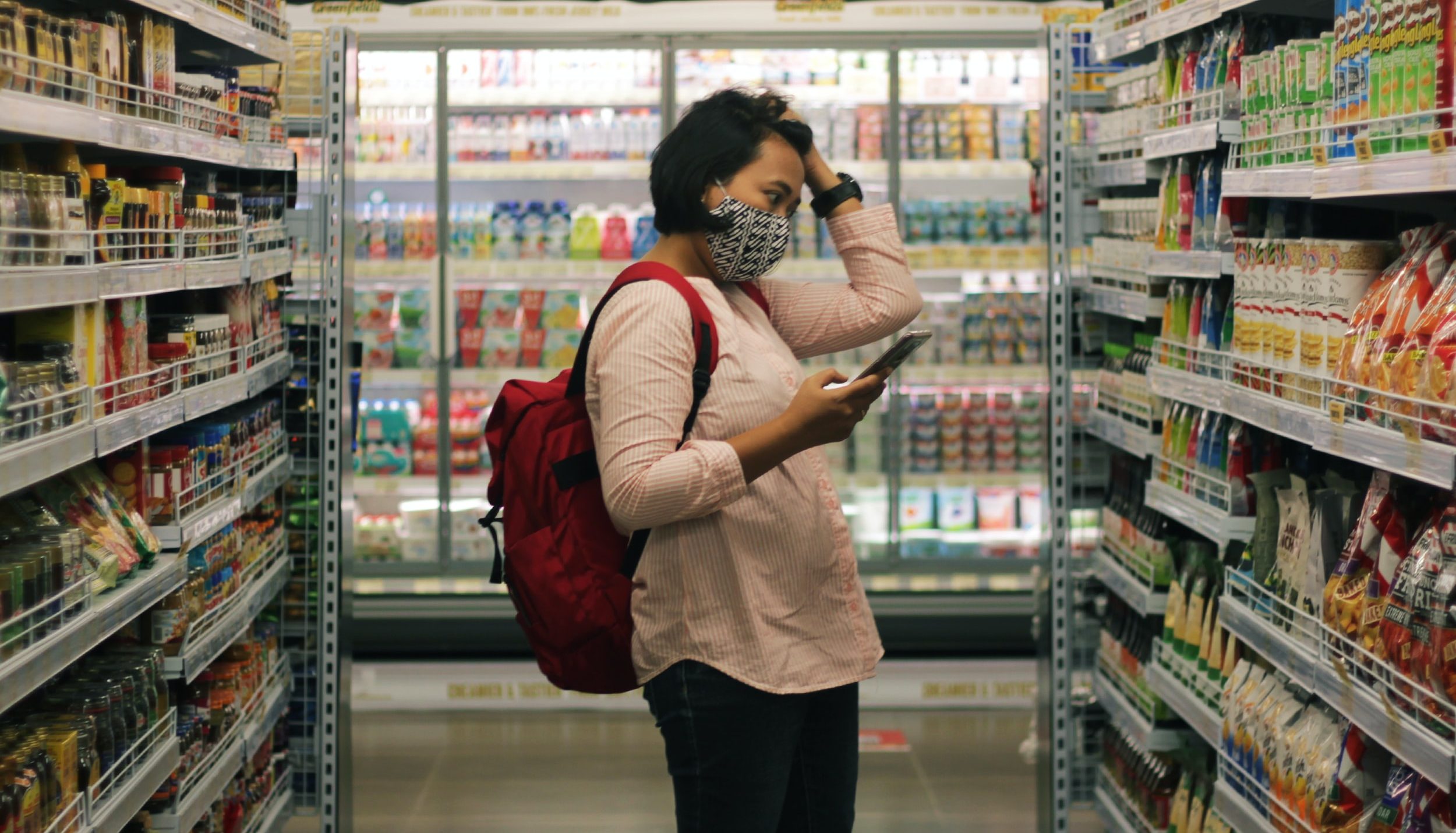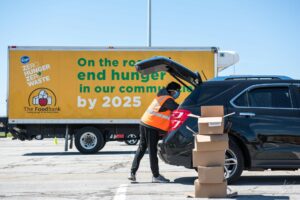Emergency SNAP Allotments
What They Are and What’s at Risk
By Mary Beringer, Grant Writer
INTRO
The pandemic has made countless changes to the way we live our lives, some permanent and some temporary. Since 2020, the world has had to alter the way we interact with each other and the way we interact with our resources.
Financial instability was exacerbated for families and businesses as a result of the Coronavirus. 334,000 more people were served by Ohio food pantries in March 2022 than in March of 2020. In some cases, federal and state support systems adapted to attempt to ease some of the burden. One such adaptation was emergency SNAP allotments, which helped hundreds of thousands of families keep food on the table and their heads above water. Unfortunately, this program will soon come to an end, unless action is taken.
WHAT IS SNAP & WHY IS IT IMPORTANT?
The Supplemental Nutrition Assistance Program, also known as SNAP and formerly known as food stamps, is a federal program which helps Americans with low incomes buy nutritious food for their families. There are specific eligibility requirements for who can receive SNAP benefits. An applicant’s household must fall at or below 130% of the Federal Poverty Limit and cannot have more than $2,250 in resources (such as cash or money in a bank), or $3,500 if at least one person in the household disabled or older than 59. Most applicants who are physically able to work are required to do so, though the number of hours varies based on several factors. Beneficiaries receive an Electronic Benefits Transfer (EBT) card, which they can use to purchase groceries at approved retailers.
It has been discussed before on this blog how SNAP is critical to our hunger relief work here at The Foodbank. SNAP was built to be a pre-existing structure in times of economic crisis. Foodbanks are critical as well, but for every meal that Feeding America’s network provides, including those from The Foodbank, SNAP allotments provide nine meals. SNAP also stimulates the economy. Every dollar spent in SNAP benefits in Ohio generates between $1.50 and $1.80 in economic activity.
There has long been a pervasive public perception that people using SNAP are “lazy” or lying about their need. The truth of the matter is that food insecurity is pervasive, and only a fraction of people who could benefit from food assistance actually get it. At The Foodbank, Inc., we base our data on Feeding America’s Map the Meal Gap studies. The post-pandemic data has not yet been released, but in 2019 we know that there were 35,207,000 people who self-reported food insecurity in the United States. 50% of those people were below the SNAP threshold of 130% poverty. Consistently, over the years, we can see that two thirds of people using SNAP are children, seniors, or people with disabilities. These are people who need help getting food on their tables, and while foodbanks help, we wouldn’t be able to do what we do without SNAP.
HOW DID IT CHANGE WITH COVID-19?
In a normal year, there are a significant number of people who need food assistance in America. After the pandemic hit, that number jumped dramatically. In the midst of COVID-19, many people lost income, supply chains dried up, and already fraught financial situations became dire. In response, Congress issued SNAP emergency allotments as a part of the Families First Coronavirus Response Act. These are additional funds to supplement what SNAP already supplies.
The emergency allotments helped boost benefits for around 700,000 Ohioans. The specific increase in funds depended on family size and specific situations, but Congress increased monthly benefits for all families by at least $95, and some saw an increase of over $200. Another factor at play is whether or not a household’s state is still in a state of emergency due to the pandemic, which can grant additional benefits. While this is no longer the case for most states, some have chosen to keep the emergency allotments going regardless, as Ohio did.
USDA research has shown that expanded SNAP benefits, along with federal child nutrition programs, were crucial to mitigating the effects of the pandemic on hunger across the country. Some have long said that the standard SNAP benefits were not enough. The only problem is that these life-changing programs are about to end.
WHAT IS AT RISK OF CHANGING?
Some of the SNAP improvements over the last few years are permanent and will do lasting good for our communities. However, as pandemic emergencies end, a significant portion of many people’s SNAP benefits will disappear.
The federal public health emergency (PHE) declaration needs to be renewed every 90 days in order to continue and keep providing expanded benefits. The next 90 day window ends on July 15th, 2022. The Biden Administration’s Department of Health and Human Services (HHS) has promised that it will notify states 60 days prior to the end of the PHE if they will not be renewing it. Because there was no announcement in mid-May, we can assume that the PHE will be extended until mid-October, though it is possible that the July extension could be shorter or longer.
Regardless, eventually the public health emergencies at the state and federal level will be lifted, and Ohioans who depend on the extra money from the emergency allotments will be left in the lurch. The graphic below from the USDA shows just one example of a family’s SNAP benefits at various points in time.

It is true that, in this example, the Johnson family will be receiving more SNAP benefits when the pandemic emergency status ends than they did before the pandemic. However, while the state of emergency has technically ended, this does not mean that American families no longer feel the ramifications of COVID-19. As we have discussed, inflation is at record highs, putting pressure on many American families. Food and fuel costs are especially exorbitant, which makes it harder for people to get groceries, and for foodbanks to stock their shelves.
CONCLUSION
The argument can be made that SNAP benefits were too low for years before the pandemic. What is not debatable is that SNAP has helped hundreds of thousands of Ohioans get by in the past few years, and the ending of expanded benefits will have drastic consequences.
Some lawmakers have proposed legislation to permanently expand SNAP benefits even more, and The Ohio Association of Foodbanks, of which The Foodbank, Inc. is a member, is asking the state of Ohio for $183 million from the American Rescue Plan Act to help stock the shelves of foodbanks across Ohio in preparation for the end of the PHE, when foodbanks and food pantries are likely to see a sharp increase in neighbors visiting. You can sign a petition to support this campaign.
Action must be taken to help maintain the safety net built to protect the most vulnerable people in our society. When things are unstable, we have to lean on each other for support, and many Ohioans are still on shaky ground.
–
Thank you to Joree Novotny, from the Ohio Association of Foodbanks who helped clarify some of the points included in this blog post.
References
“Our Statewide Request For ARPA State Fiscal Recovery Funds – Ohio Association Of Foodbanks”. Ohio Association Of Foodbanks, 2022, https://ohiofoodbanks.org/arpa/.
“Sign-On To Urge Ohio Leaders To Mitigate The Impact Of The COVID Cliff”. Ohio Association Of Foodbanks, 2022, https://p2a.co/pkDpSbd.
“SNAP Benefits – COVID-19 Pandemic And Beyond”. Food And Nutrition Service- U.S. Department Of Agriculture, 2022, https://www.fns.usda.gov/snap/benefit-changes-2021.
“State-By-State Resource: SNAP And COVID-19”. Feeding America Action, 2022, https://feedingamericaaction.org/resources/state-by-state-resource-snap-and-covid-19/.
Supplemental Nutrition Assistance Program (SNAP) Facts. 2022, https://www.ssa.gov/pubs/EN-05-10101.pdf.
Gallion, Emily. “The Long Shadow Of The “Welfare Queen” Narrative”. The Dayton Foodbank, 2022, https://thefoodbankdayton.org/welfare-queen/.
Guardia, Luis. “Latest USDA Data Reveal SNAP And Child Nutrition Programs Critical To Mitigating Spikes In Hunger Caused By COVID-19 Crisis”. Food Research & Action Center, 2022, https://frac.org/news/usdadatasnapcncritical01282021.
McIntosh, Caitlyn. “SNAP Is Critical To Our Hunger Relief Work – Here’s Why”. The Dayton Foodbank, 2020, https://thefoodbankdayton.org/snap/.
“Supplemental Nutrition Assistance Program”. Feeding America, https://www.feedingamerica.org/sites/default/files/assets/pdfs/fact-sheets/snap-factsheet-final.pdf.
Ungar, Laura. “SNAP Benefits Helped Older Adults During Pandemic”. AARP, 2021, https://www.aarp.org/politics-society/government-elections/info-2021/snap-benefits-helped-during-pandemic.html.
Wright, Amber. “Inflation Escalates Hunger”. The Dayton Foodbank, 2022, https://thefoodbankdayton.org/inflationescalateshunger/.
Wu, Titus. “700,000 Low-Income Ohio Households Could See Big Cuts To Food Stamps Program In July”. The Columbus Dispatch, 2022, https://www.dispatch.com/story/news/politics/government/2022/05/11/ohio-low-income-families-see-big-cuts-snap-benefits-congress-legislature-food-banks-inflation-covid/9645897002/.





No comment yet, add your voice below!